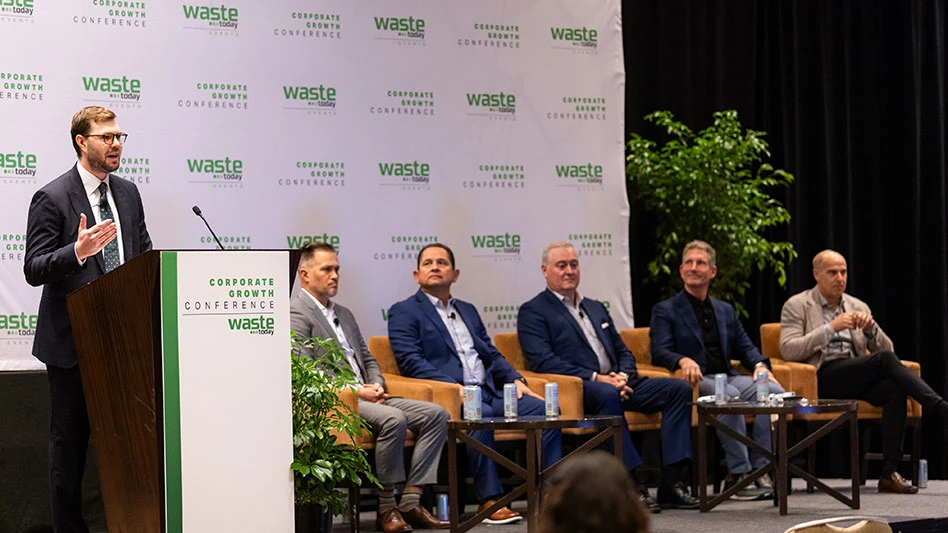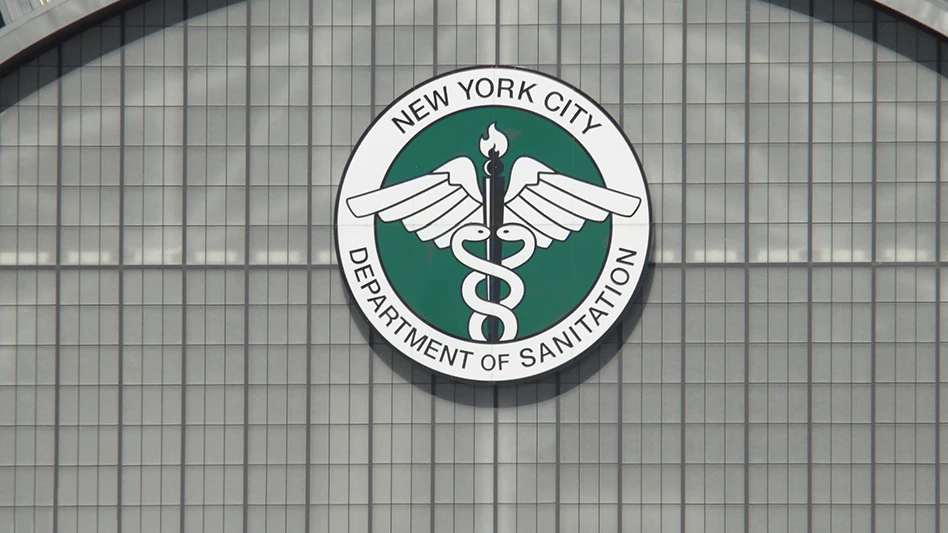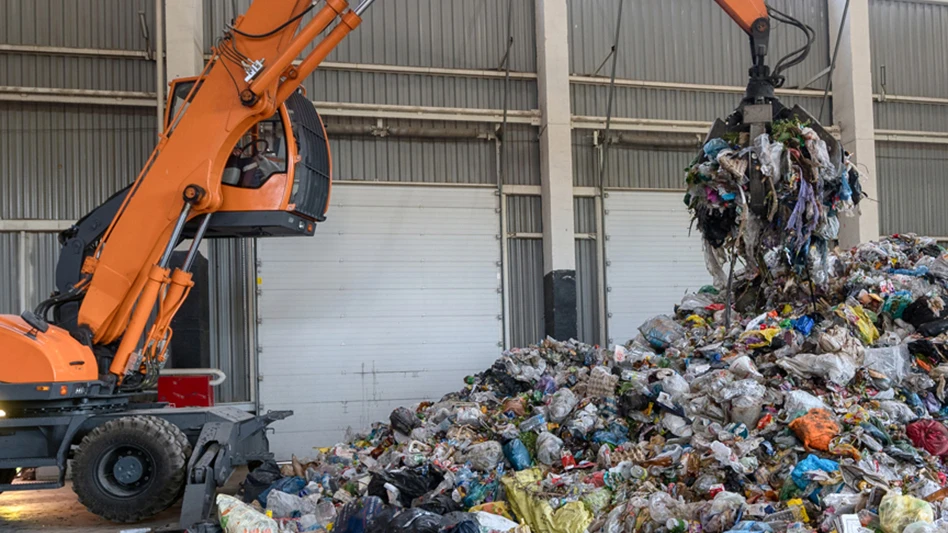
The city of Carlsbad, California, did not have an edible food recovery program in place before California Senate Bill 1383, the state’s food recovery law, required communities across the state to do so.
As part of statewide efforts to reduce food waste and help address food insecurity, the law established a goal that California would recover 20 percent of edible food that would otherwise be sent to landfills by 2025. Meeting this goal has required jurisdictions to actively expand and create new infrastructure to grow food recovery networks and build sufficient food recovery capacity.
“We wanted to establish the city as a leader in sustainable materials management,” said Avecita Jones, senior project manager for the city of Carlsbad’s Environmental Management Department, during a SWANA SOAR session titled California Food Recovery Legislation and Implementation.
The city’s sustainability leaders quickly got to work, developing action plans for every municipal department. Through a landscape assessment, the city learned that while many Carlsbad businesses offered edible food recovery programs, food was leaving the city and traveling as far as 35 miles away.
Jones and her team met with local food banks to determine their needs. Next, city officials established a recommendation to develop a grant program and identify pass-through funding to supplement CalRecycle funds. The money would be used to establish a food recovery funding program aimed at saving landfill space and lowering methane emissions, explained Molly Reeves, senior environmental specialist for the city’s Sustainable Materials Management division.
Food recovery often is a complex system involving transportation and delivery logistics, food safety requirements and ongoing coordination between donors and recipients. In Carlsbad, the recovery program funds equipment and operational support to help community-based organizations recover surplus edible food that is still safe for human consumption and redirect it to food banks, soup kitchens and other food recovery organizations in the city.
It’s just one example of the many ways California communities are working collaboratively to come into compliance with S.B. 1383. The statewide mandatory organic waste collection regulations place responsibility on local municipalities to design and manage organics collection and recycling.
Bill overview
Adopted in 2016 with a goal to reduce greenhouse gas emissions in California, S.B. 1383 requires disposal sites to adopt practices to result in a 75 percent reduction in organic waste in landfills by 2025, says Keshav Parikh, an assistant project manager with Civil & Environmental Consultants Inc., a San Diego-based civil engineering firm.
Beginning in 2022, enforcement of the law requires every city and county to provide organic waste collection services to all residents and businesses. Organic waste includes food, green material, landscape and pruning waste, organic textiles and carpets, lumber, wood, paper products, printing and writing paper, manure, biosolids, digestate and sludges.
The state of California has invested nearly half a billion dollars to launch the law, with $270 million in circular economy funding awarded to CalRecycle to oversee the program.
States including Washington, Oregon, New York, Vermont and New Hampshire have organics diversion laws in place or will soon, and in states such as Colorado and Texas, feasibility studies are underway, Parikh said.

How it’s going
Two years in, state recycling leaders say the organic waste regulation legislation has been successful, but much work still needs to be done.
A 2023 report from the agency Little Hoover Commission in Sacramento, California, found the state is behind on its organics diversion targets and recommended pausing or altering requirements, such as those governing organic material procurement and providing assistance to local jurisdictions working to comply with the law, to give local governments a chance to catch up.
The California legislature is working on potential tweaks to the law, with 11 state bills currently being considered to address edible food recovery, organic waste procurement, organic waste regulations, composting facilities, greenhouse gas reductions and organic waste waivers, explained Veronica Pardo, the regulatory affairs director for the Resource Recovery Coalition of California, during a 2024 WasteExpo panel discussion titled How’s it Going? California’s Organic Waste Management Process.
One proposed amendment would require CalRecycle to provide additional technical assistance, such as data reporting, educational programming, local program development and procurement target clarification support, to local jurisdictions. Two others would require the state to provide zoning and permitting support for compost facilities, while another would ease organic material procurement requirements by allowing material acquired from community composters and on-farm composters to count toward procurement targets.
What’s working
Since the law went into effect, the state has seen success across several key areas, said Monica White, sustainability manager for the Sacramento-based environmental engineering firm Edgar & Associates.
Organics collection: One of the initial successes of the organics diversion legislation has been providing organics collection services to all residents and businesses across the state, with 11.2 million tons of organic waste diverted through recycling in 2022, said Tracie Onstad Bills, west region waste sector business development leader for Bend, Oregon-based engineering design firm HDR.
CalRecycle has provided templates for collection and infrastructure, as well as additional educational and outreach resources. Across the state, 75 percent of jurisdictions report residential organics collection is in place, while 143 jurisdictions have approved waivers or exemptions because of their rural location, high elevation or low population, Bills added.
Food recovery: Nearly all jurisdictions have reported new or expanding food recovery programs, which have recovered 20 percent of edible food that would have been wasted, White said. In 2022, 201,000 tons of recovered food were reported, she said, and the 2025 target is to recover 231,000 tons of food.
Awareness: The bill has brought greater awareness to the need for and importance of food recovery, White said. It’s also creating change and awareness around the importance of purchasing recycled-content materials, Bills said.
Collaboration: A regional approach has worked well in California, leaders say. Across the state, municipalities are collaborating with local associations and partners to implement collection programs. The legislation has created positive regional relationships between established food recovery organizations.
“Regional approaches that mimic existing food recovery infrastructure and food systems have been especially effective,” White said.
Areas for improvement

At the same time, White said, there’s room for improvement across the board.
Procurement: Beginning in 2022, S.B. 1383 requires cities and counties to procure a specific quantity of recovered organic waste products, such as compost, mulch or renewable energy from anaerobic digestion, to meet an annual procurement target.
Many communities have struggled with the procurement obligations, Bills said. Designed to provide a market for recycled organic materials, these requirements promise to drive infrastructure investment and create new jobs across the state, but jurisdictions currently have relatively few sources of material because processing capacity is limited.
“Developing a list of current procured materials is extensive and time-consuming,” Bills said.
Funding: Additional funding is needed to establish collection and distribution systems in every jurisdiction, White said. Many municipalities have not started or do not have enforcement authority.
“Systems are complex; they involve multiple agencies and dynamics. There is no trickle-down funding. It’s a highly competitive system with grants and inequity,” White said. “Grants add competition and increase inequity because the nonprofits that can apply for grants have more people.”
Creating compost
A 2019 infrastructure and market analysis found that of 39 million tons of overall waste produced in California, 67 percent were organics, Shekav said. Where does all that organic material go? Primarily to composters such as Agromin, an Oxnard, California, company that manufactures compost from food waste, green waste, wood waste, agricultural waste, manure and liquid waste.
That compost then goes to agricultural industries, where it’s used as soil cover or mulch, said Agromin CEO Bill Camarillo.
Agromin manufactures a soil nutrient and 200-plus soil products to be used for agricultural uses, he added.
Camarillo said his ultimate vision is to become the state’s best-known and most easily accessible compost product.
“We want to be the first Amazon for compost,” he said.

Explore the September 2024 Issue
Check out more from this issue and find your next story to read.
Latest from Waste Today
- CAA submits final draft program plan in Oregon
- Washington city adds organics collection to waste service
- Aspen Waste Systems expands into Denver-metro market
- NYSAR3 seeks respondents to commercial recycling survey
- Aemitis AD system goes online
- Liebherr breaks ground on logistics center
- Rubicon appoints new CFO
- Nexus W2V attracts funding for waste conversion project in Indiana





